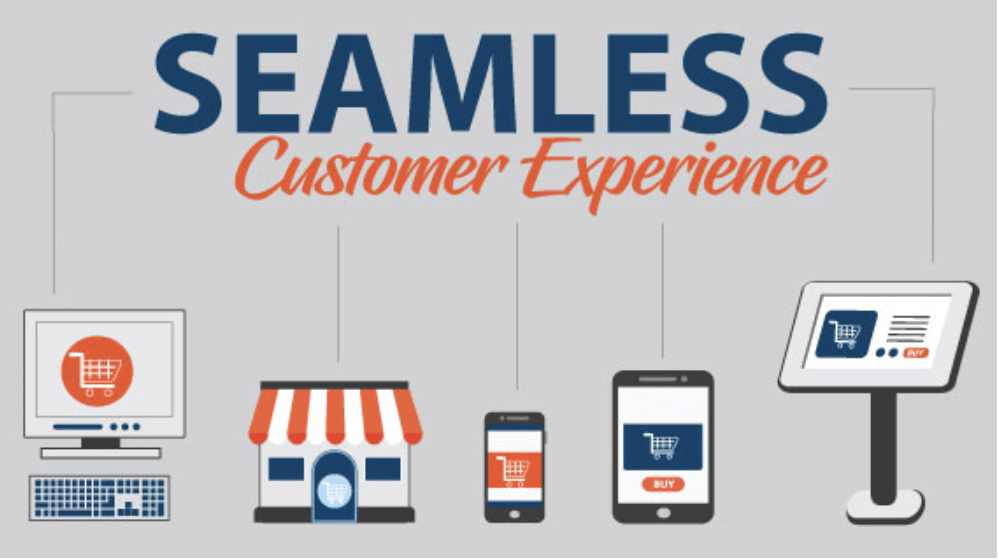How (and Why) to Create a Customer Journey Document

In a business landscape increasingly defined by digital transformation and omnichannel communication, providing exceptional and personalized customer experiences at all customer touchpoints has grown in importance. Eighty percent of consumers report changing brands following customer experiences that failed to meet their expectations. To meet rising customer expectations for quality experiences throughout their interactions with businesses, you can use your customer data to create customer journey documents that will help you connect with the right customers in the right channels.
Recent changes in how customers evaluate businesses beyond price points have caught the attention of decision-makers. Most marketing creatives and customer service managers – 86% – say that the quality of customer experiences is where they expect to surpass or lag behind the competition.
Customer churn based on unsatisfactory experiences costs businesses $35.3 billion annually. To improve the quality of your customer experiences and drive retention and satisfaction, you need the right analytical tools to help you understand your customers on their terms. In this guide, you’ll learn what customer journey documents are and how to use them to improve the overall customer experience in your organization.
Key Takeaways:
- A customer journey document – also called a map – is a visual outline of the stages of interaction your customers experience with your business.
- Customer data can help you create effective customer journey documents to guide you in designing better customer experiences.
- Using customer journey documents to understand the touchpoints through which customers interact with your business can help you identify potentially costly gaps in the experiences you provide.
What Is a Customer Journey Document?
A customer journey document – also commonly called a map – is a graphic representation of the touchpoints or stages a customer passes through while interacting with your business. These touchpoints may include social media interactions such as likes and comments, ordering products online, or contacting customer service, among many others.
Businesses developed capacities to collect and analyze extensive customer data to create customer journey documents that accurately reflect how customers move through different channels and touchpoints. Unique among the documents you have to manage, the customer journey document – or map – should attempt to represent customer sentiment and perspective at each stage and not simply the business’ perception of interactions.
To develop effective customer journey management capabilities, businesses need to use their customer data to catalog the variety of journey routes represented by their customers. In particular, you want to know the specific touchpoints that begin journeys resulting in purchases and lasting customer loyalty. Depending on your industry, brand, and the demographics of your target audience, your strongest point of initial contact may be a specific social media channel such as Facebook or Instagram, or it may be organic search traffic or linked traffic through marketing content.
Essential Parts of a Customer Journey Document
Typically, customer journey documents consist of four key components.

1. Journey Stages
Businesses break down customer journey stages in varying ways, but four common steps include:
- Inquiry or Awareness: The stage at which a potential new customer becomes aware of your business as a possible solution to a need or want through self-initiated inquiry or exposure to advertising or other brand content.
- Comparison: Now considering your brand a viable option, your potential customer weighs his or her options and gathers information on competing alternatives.
- Decision to Purchase: Having been convinced – whether by price point, customer experience, or brand identification – your potential customer decides to make a purchase and is now yours to retain for a longer relationship.
- Installation or Retention: At this stage, your new customer’s overall experience with your brand and satisfaction with their purchase will determine whether they will seek you again for further needs and be receptive to follow-up and personalized advertising.
2. Buyer Personas
Buyer personas are profiles of your target customer or customers as suggested by your existing customer data. Buyer personas describe your ideal customers in human terms– probable demographics of age and industry, preferred engagement methods, and what types of sentiment are most likely to drive loyalty. With multiple data-driven personas, you can better predict customer behavior and offer them more personalized experiences.
3. Customer Touchpoints
Mapping the touchpoints recorded in your customer data is essential to creating effective customer journey documents. Your data will help you understand which touchpoints customers of varying personas are likely to prefer at different stages of their journeys. The ability to handle increasing customer preference for omnichannel communication has become more complicated with the proliferation of digital touchpoints. A decade ago, customers used, on average, just two touchpoints when interacting with businesses. Today they typically use six.
4. Customer Sentiment
Customer journey documents help you understand your customers’ sentiments and emotions. With a data-driven sense of how they feel, you can more accurately predict what kind of customer experience to provide that will engender trust and brand loyalty.
Why Create Customer Journey Documents
Businesses can use customer journey documents to guide practices throughout different departments such as sales, marketing, and customer service. When designed with reliable customer data, these documents can illuminate the path of interactions by which customers arrive at your brand or products.

Businesses strive to create a seamless experience in which the customer feels understood and connected at every touchpoint to meet today’s standard of customer expectations. Analyzing customer journeys can expose gaps in this experience. Areas where customers might find a rift in their expectations include:
- Channels
- Departments
- Devices
In each of these touchpoints, customers finding a different kind of experience – one less tailored to them personally – can result in churn. Using customer journey documents to bring all departments and representatives to the same page can close these gaps and help create a high-quality, continuous, and personalized experience for your customers.
Outstanding Document Management Support with FileCenter
FileCenter’s Document Management Software provides unparalleled, cloud-integrated document management capabilities out-of-the-box. Additionally, FileCenter’s dedicated team of experts provides ongoing support above your expectations in live support streams and free video tutorials.
To explore FileCenter’s extensive catalog of tutorials, visit FileCenter today.


